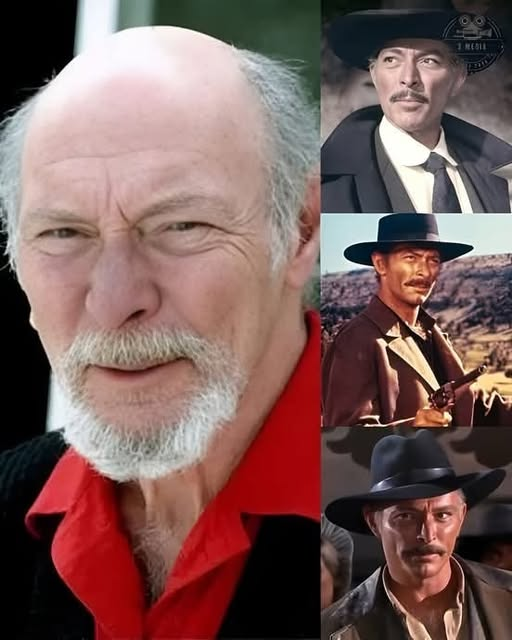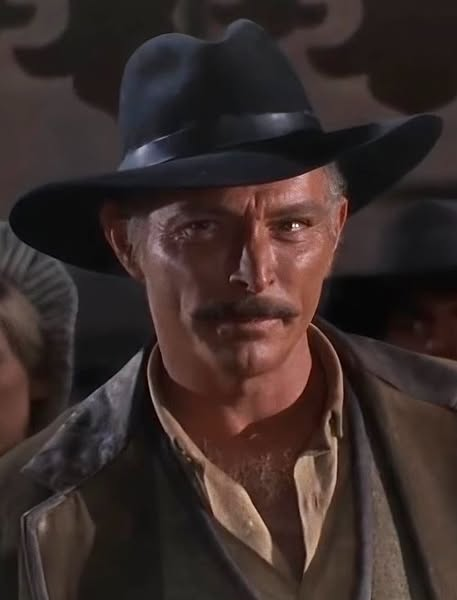Wishing a happy 101st birthday to a legend Lee Van Cleef

Celebrating Lee Van Cleef: A 101st Birthday Tribute to a Cinematic Legend
On January 9, 1925, Clarence LeRoy Van Cleef Jr. was born in Somerville, New Jersey—a man who would become an enduring icon of cinema, known simply as Lee Van Cleef. As we mark what would have been his 101st birthday, we celebrate a remarkable career that spanned nearly four decades, cementing his legacy as one of the most distinctive and charismatic actors in film history. With his hawk-like features, piercing gaze, and commanding screen presence, Van Cleef became synonymous with the rugged anti-heroes and villains of Westerns and action films, particularly in the Spaghetti Westerns that defined his stardom. This article explores his life, career, and lasting impact, honoring a true legend of the silver screen.

Early Life and Military Service
Born to parents of Dutch descent, Marion Lavinia Van Fleet and Clarence LeRoy Van Cleef Sr., Lee Van Cleef grew up in Somerville, New Jersey. His father was a pharmacist and his mother a concert pianist, but young Lee’s path took a different turn. After graduating from Somerville High School, he enlisted in the United States Navy in September 1942, at the height of World War II. Serving as a sonarman aboard the minesweeper USS Incredible, Van Cleef participated in critical operations, including patrols in the Caribbean, landings in southern France, and minesweeping duties in the Black Sea near Sevastopol, Crimea. His service earned him a Bronze Star, Good Conduct Medal, and several campaign medals, including the European-African-Middle Eastern Campaign Medal and the Asiatic-Pacific Campaign Medal. Discharged in March 1946 as a Sonarman First Class, Van Cleef’s naval experience shaped his disciplined demeanor, a trait that later defined his on-screen intensity.
After the war, Van Cleef returned to New Jersey, briefly working as an accountant and playing in an amateur dance band. His entry into acting came through local theater, where he performed roles like George in Our Town and Joe Pendleton in Heaven Can Wait at the Little Theater Group in Clinton, New Jersey. A talent scout spotted him, leading to a role in the national tour of Mister Roberts. It was during a Los Angeles performance of the play that film producer Stanley Kramer noticed Van Cleef, setting the stage for his cinematic debut.

Breaking into Film: The Early Years
Lee Van Cleef’s film career began with a bang in 1952, when he landed the role of Jack Colby, a silent gunslinger, in the classic Western High Noon, starring Gary Cooper. Though the role was non-speaking, Van Cleef’s menacing presence made an impression. Kramer initially offered him the speaking role of deputy Harvey Pell but requested he fix his distinctive hooked nose—a request Van Cleef declined, opting instead for the silent but memorable part. This decision proved wise, as his angular features and steely eyes became his trademark.
Throughout the 1950s, Van Cleef was typecast as a villain or supporting player in Westerns and crime dramas. He appeared in films like Kansas City Confidential (1952), The Big Combo (1955), Gunfight at the O.K. Corral (1957) as Ed Bailey, and The Tin Star (1957) as Ed McGaffey. His television work was equally prolific, with guest roles in series like The Lone Ranger, The Adventures of Kit Carson, Sky King, and Annie Oakley. Van Cleef’s ability to convey menace with minimal dialogue made him a go-to heavy, though he later reflected, “Being born with a pair of beady eyes was the best thing that ever happened to me.”
A serious car accident in the late 1950s temporarily derailed his career, causing injuries that sidelined him. However, his fortunes changed dramatically in the mid-1960s, thanks to an Italian director who saw star potential in his weathered visage.

Stardom in Spaghetti Westerns
Lee Van Cleef’s ascent to international fame came through his collaboration with director Sergio Leone in the Spaghetti Western genre. In 1965, Leone cast him as Colonel Douglas Mortimer in For a Few Dollars More, opposite Clint Eastwood’s Man with No Name. Van Cleef’s portrayal of the seasoned, morally complex bounty hunter showcased his ability to blend toughness with depth, stealing scenes with his understated charisma. The film’s success led to his iconic role as “The Bad,” Angel Eyes, in The Good, the Bad and the Ugly (1966), where his chilling performance solidified his status as a Western legend.
These films transformed Van Cleef into a cult figure, particularly in Europe, where he became one of the top box-office draws by the early 1970s. His Spaghetti Western roles continued with starring turns in films like The Big Gundown (1966), Death Rides a Horse (1967), Day of Anger (1967), Sabata (1969), Return of Sabata (1971), and The Grand Duel (1972). Van Cleef’s characters often straddled the line between hero and anti-hero, with his piercing gaze and laconic delivery making him unforgettable. As he once said, “A lot of actors think that the more lines they have, the more attention they get. That’s bullshit. I make people look at me. I don’t have to say a lot of words.”
His work in these films highlighted his unique screen presence. Fans on platforms like Reddit have noted, “Lee Van Cleef’s screen presence remains unrivalled with a piercing gaze that could burn a hole in the screen,” a sentiment echoed by many who admired his ability to dominate scenes with minimal effort.
Later Career and Versatility
As the Spaghetti Western craze waned, Van Cleef transitioned to other genres, showcasing his versatility. In the 1970s, he starred in films like Barquero (1970), El Condor (1970), and The Magnificent Seven Ride! (1972). He ventured into action and martial arts with The Stranger and the Gunfighter (1974) and Take a Hard Ride (1975). In 1981, he played Police Commissioner Bob Hauk in John Carpenter’s Escape from New York, delivering a memorable performance as a tough but fair authority figure opposite Kurt Russell.
In 1984, Van Cleef took on the lead role of John Peter McAllister in the TV series The Master, a martial arts drama that, despite lasting only 13 episodes, gained a cult following. His portrayal of a ninja master was both gritty and charismatic, with fans later recalling, “As a kid, I totally bought into his portrayal as a ninja master…because, you know…ninja.” He also appeared in TV commercials, notably for Midas Muffler in Canada, where his Spaghetti Western persona was cleverly repurposed.
Van Cleef’s later years saw him in films like Code Name: Wild Geese (1984) and Armed Response (1986), though his health began to decline due to heart issues. Despite this, he continued working, leaving behind a legacy of over 170 film and television roles.
Personal Life and Legacy
Van Cleef’s personal life was marked by resilience and privacy. He married three times and had four children. A notable anecdote reveals his softer side: he lost the tip of a finger while building a dollhouse for his daughter, a detail that added to his rugged on-screen image when highlighted in Spaghetti Westerns. He passed away on December 16, 1989, from a heart attack at his home in Oxnard, California, at the age of 64. His death was widely mourned, with Clint Eastwood noting at his funeral, “Van Cleef had one of the better faces on the screen—and that face will be missed.”
Van Cleef’s legacy endures through his iconic roles and the admiration of fans and filmmakers. His influence is evident in tributes across platforms, from DeviantArt to Reddit, where fans celebrate his 100th birthday and beyond, calling him “the best of the bad” and a “screen legend.” His films continue to inspire, with The Good, the Bad and the Ugly and For a Few Dollars More remaining staples of the Western genre. Posts on X reflect ongoing reverence, with users like @ArrowFilmsVideo noting, “Nobody does it like Lee Van Cleef,” and @DannyDrinksWine commemorating his centennial with clips from his iconic roles.
Why Lee Van Cleef Matters
Lee Van Cleef’s career is a testament to the power of presence. His ability to convey menace, grit, and humanity with a single glance made him a standout in every role, from villain to hero. He once said, “One day, something happened. It made life very precious to me,” a sentiment that resonated in his performances, which often carried a quiet depth beneath their toughness.
For fans of Westerns, action films, or simply unforgettable characters, Van Cleef’s work offers a masterclass in screen charisma. His films are a journey through cinema history, from the classic Hollywood Westerns of the 1950s to the gritty Spaghetti Westerns of the 1960s and the action-packed 1980s. Whether he was facing down Gary Cooper in High Noon, outsmarting Clint Eastwood in For a Few Dollars More, or leading as a ninja master in The Master, Van Cleef left an indelible mark.
As we wish a happy 101st birthday to this cinematic titan, we invite fans old and new to revisit his films, from the iconic The Good, the Bad and the Ugly to lesser-known gems like Death Rides a Horse. Lee Van Cleef wasn’t just an actor—he was a legend whose steely eyes and rugged charm continue to captivate audiences worldwide. Here’s to a man who made every frame he appeared in unforgettable.